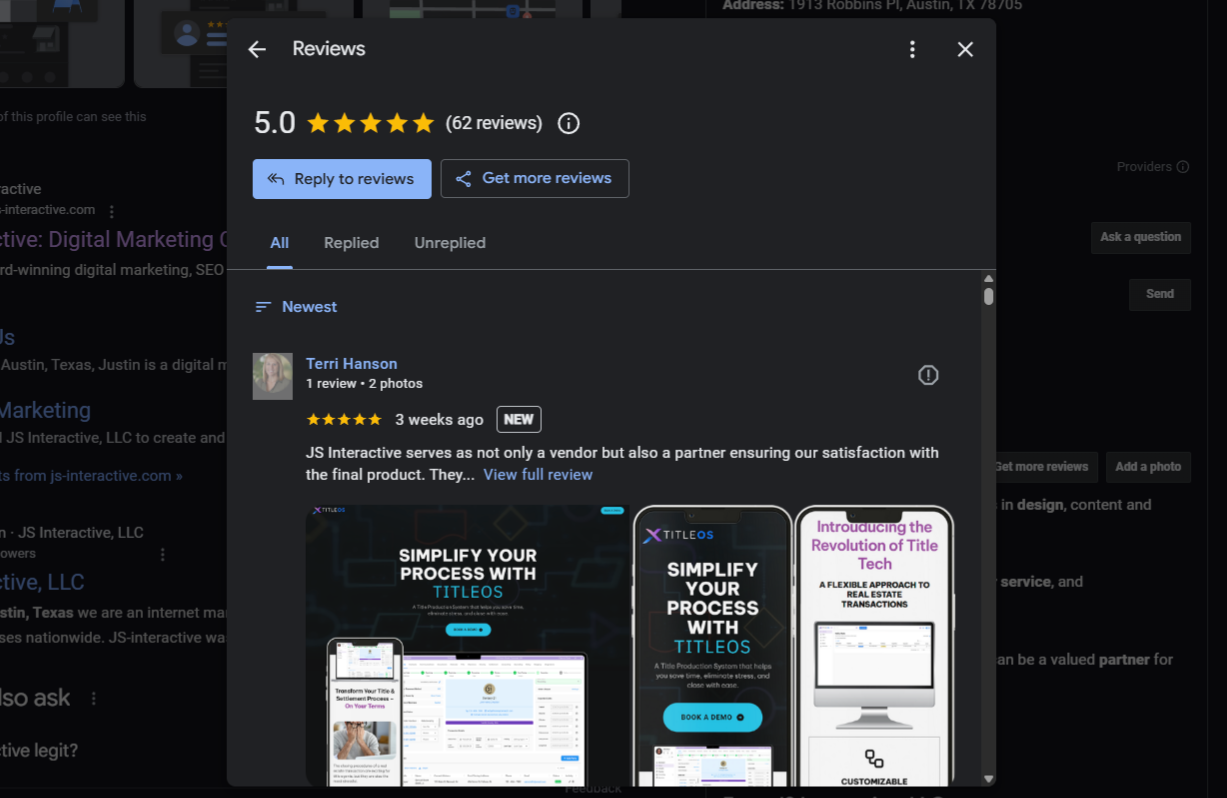Brand Differentiating: How to Make Your Business Stand Out in 2025

Trying to stand out in today’s overcrowded market feels like trying to catch a baseball thrown into the crowd at your favorite stadium. The entire crowd surges as one toward that single object, yet only one person will emerge victorious.
Those taller can reach further and have the advantage because they can stand above the crowd.
What helps you, as a business, stand above the crowd of competition when you are reaching out to clients? Establishing successful brand differentiation builds credibility, loyalty, and long-term growth. Without it, you will have no chance of winning against the competition.
What Is Brand Differentiating and Why Does It Matter?
Think back to the last old Western movie you watched. You will notice that when the cowboys ride into town, there usually is only one general store they shop at or one dressmaker the women visit.
In most cases, that is no longer the circumstance. Just drive through the nearest town and count how many grocery stores there are.
Existing is no longer equivalent to success. You must also find a unique angle to your business so customers understand how you differ from and are BETTER than the dozens of similar companies.
If you think the best way to win against your competition and be different is to charge less than your competition, you will lose profits. If money were the only factor in competing businesses, brands like Rolex wouldn’t exist. There are dozens of unique qualities, aspects, and characteristics that can appeal to clients if you know how to identify those qualities.
Brand differentiating strategies put those unique qualities at the forefront of marketing. Establishing successful brand differentiation builds credibility, loyalty, and long-term growth.
9 Ways to Effectively Differentiate Your Brand
Identifying and marketing your unique brand can be challenging. You need to unify your approach. Otherwise, you end up with a Frankenstein marketing machine encompassing various unmatching techniques roughly sewn together to resemble marketing without the heart of proper marketing.
Here are nine tips to optimize your marketing efforts, concentrating on effective strategies that set you apart as a distinctive brand.
1. Narrow Your Focus
If someone asks you to write a story that will appeal to a 2-year-old and a 20-year-old, you will soon realize that while you can have parts that will appeal to both readers, it will not effectively resonate with either.
Your brand’s marketing story needs a niche audience. Otherwise, you will miss everyone’s mark because you are trying to reach too many different people simultaneously. If you swing the opposite way and find a unique characteristic about your brand without considering your audience, your message won’t reach anyone.
As you build a different brand, use your unique audience as the blueprint for what appeals most to them. Use the data trails they leave behind to create personalized marketing campaigns around your niche messaging.
Your plan will evolve as you collect more data, allowing you to better understand how to connect and relate to your audience through your unique brand. Since 71% of consumers expect brands to personalize their efforts, your personalization will pay off through greater customer loyalty.
2. Craft a Compelling Brand Story
Customers crave authenticity and relatability.
When you transform your brand into a personal story, your clients feel that their purchases are a part of a bigger mission.
Every major fiction story you have read will include character backstories. Those backstories tell you each person’s origins, so readers care deeply about the character, their outcome, and the journey the hero takes toward a better future. The more complex a character’s story is, the more depth the character has, helping bring that character to life as a unique individual rather than your generic action hero or heroine.
You will use a similar strategy of crafting a unique story through your website, marketing, and messaging.
You will build a story about where you came from, the challenges you faced, and the problems you overcame. You will tell that story through your brand’s vision, mission, and goals across all your channels, including your website, social media channels, and advertising content.
3. Create a Unique Value Proposition
You are a unique brand. No two businesses are the same. Every business is as different as the people who found them.
Your unique value proposition (UVP) puts those niche characteristics into words you can use in your advertising and guide your marketing efforts to unite your message like a coat of arms unites a village.
Before crafting your UVP, you must identify a problem you solve. If you have a niche focus, you may already have a list of challenges and issues in mind. Your UVP then offers a solution in a way no one else does.
Some examples of how you might make your UVP unique from your competitors include offering:
- More affordable/more expensive but higher quality products
- Add-ons your competitors don’t include
- Higher quality/more sustainable/healthier products and services
- Top-notch customer service
- Niche products no one else has addressed
You can use multiple unique angles to your business to build into your singular corner of the market. Remember to keep your audience at the center of your messaging to ensure your unique values resonate with what they want and need.
4. Foster Employee Engagement to Strengthen Your Brand
Great customer experiences start from within. Your employees are the backbone of your brand, and engaged employees create better customer interactions.
A company that fosters a positive workplace culture naturally builds an environment where employees are motivated, valued, and enthusiastic about the brand they represent.
Employees who feel engaged and appreciated are more likely to advocate for your business, provide outstanding customer service, and align their efforts with your brand’s mission. Encouraging open communication, offering professional development, and recognizing contributions can significantly boost engagement.
Ultimately, when your internal team is aligned with your brand’s vision, that energy translates into stronger customer relationships and brand loyalty.
5. Focus on Customer Relationships and Experiences
Your brand is more than just a product or service—it’s the relationships you cultivate with your customers. Businesses that prioritize customer experience differentiate themselves and create lasting brand loyalty.
Consumers today expect brands to understand their needs, provide personalized experiences, and go beyond transactional interactions. This means focusing on meaningful engagements, actively listening to customer feedback, and fostering trust through consistent, high-quality service.
By centering relationships in your brand strategy, you can turn customers into brand advocates. This approach leads to long-term success, as loyal customers return and recommend your business to others.
6. Use Social Proof and Testimonials
There is a saying that money talks and wealth whispers. In other words, those with little money tend to boast more to let people know. However, the truly wealthy don’t need to affirm their wealth. Their lives genuinely reflect that wealth through actions and the confidence that comes from success.
Truly successful people don’t need to spend much time convincing others they are successful.
When was the last time you saw a Lamborghini advertisement? It would have been years ago because they don’t do traditional advertising, as their brand speaks for itself. Instead, they use storytelling and in-person experiences to build hype around their brand. They understand the fundamental concept of showing, not telling people they are one of the top luxury car brands.
While you may not be quite at Lamborghini’s level enough to ditch your traditional advertising, you can still learn from them about the power of social proof and testimonials to build your brand name. Social proof and testimonials support your claims by sharing customers’ personal experiences, enhancing trust among new customers.
Some examples of social proof that will help to differentiate your brand include:
- Case studies
- Success stories
- Google, LinkedIn, and other site reviews

7. Design an Authentic Website and Message
Most of your digital communication is visual. Next time you look at a news article, pay attention to the fonts, colors, and pictures throughout the article. You will notice that when news outlets want you to feel anxious, they use red lettering, bold fonts, and images of angry people. When they want you to feel optimistic about a situation, the colors will be warmer and images friendlier.
What is your website design communicating to your visitors about your unique brand?
Investing in top website design helps you communicate your brand differentiation strategy through colors, images, and text layout. The site draws the eye to key pages and content pillars to guide visitors through the sales journey.
The quality of your website also reflects how organized and professional your business is. You want your site to be fast, mobile-friendly, and visually distinct. It will be the digital version of “Dress to impress.”
Investing in your website’s appearance and technical workings will reduce the likelihood of losing visitors due to technical issues and poor accessibility.
8. Stay Agile with Market Trends
Not too long ago, newspaper ads were the hot ticket to business success. Today, most marketers would earn a few side eyes if they suggested newspaper advertising. Marketing and advertising your business changes yearly. Sometimes, it can change from week to week, especially if you offer seasonal products or services.
Keeping your brand differentiation strategies agile allows you to adjust them as trends change and new technologies emerge.
Monitoring these strategies and your competition keeps you on top of what’s hot in your industry and where your audience spends their time. The latest technology, tools, and marketing channels will give you additional boosts over your competitors. If you are among the first in your industry to adopt the new technology, you become a leader rather than a straggler playing catch up.

Image from Agile Sherpas
9. Leverage Digital Marketing to Strengthen Your Brand Authority
Offline media is on the decline. By the end of 2024, 60% of marketing was digital. Digital marketing has two benefits, making it one of the most potent ways to build your brand authority and differentiate your business. The first is the ability to reach much larger audiences than any other marketing channel. Through digital marketing, the world is at your fingertips. You can connect with thousands in your niche through a single blog post, advertisement, or press release.
The second benefit is your ability to customize and narrow your niche audience. Using SEO, advertising filters, email segmentation, and targeted marketing campaigns, you can reach particular groups within your audience with a message that would connect with them, allowing you to differentiate yourself in a way that each group would resonate with the most.
Build a Brand That Catches Your Client’s Eye
Brand differentiating strategies will set you up for success by identifying a unique niche, problem, and solution you solve, showing customers how you are different from your competitors. Your goal is to show, not just tell, your clients that you are the best in your niche through testimonials, web design, and a modern, quality marketing strategy.
Brand differentiation is an ongoing process of learning, adapting, and strengthening your brand position based on how your clients’ needs change.
Do you need help refining your brand? Let JS Interactive create a tailored strategy that sets you apart!
Contact us today to get started.